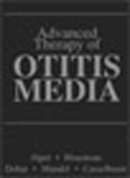A. Introduction
1. Definitions
2. Diagnostic methods
3. Examination of ear drum for OM
4. Epidemiology
5. Risk factors
B. Acute Otitis Media
6. First line treatment of simple acute otitis media
7. Short course antibiotics for AOM
8. Management of AOM without antibiotics
9. Myringitis bullosa
10. AOM with perforation
11. Irritable child with middle ear fluid with or without fever
12. Red ear drum with no middle ear effusion
13. Myringotomy in AOM
14. Viral AOM?
15. OME in neonate
16. AOM/OME in immunocompromised child
17. AOM in HIV
18. AOM in children with penicillin/antibiotic allergy
19. Persistent symptoms/antibiotic failure in AOM
20. Management of AOM in antibiotic resistance era worldwide
21. Unresolved fluid after AOM
22. Adjuvant therapy for AOM
23. Intramuscular therapy of AOM
C. Recurrent Acute Otitis Media
24. Risk factors related to management
25. When is AOM too often?
26. Management of otitis prone child
27. Ventilation tubes for recurrent AOM
28. Antibiotic prophylaxis for recurrent AOM
29. Adenoidectomy with/without tonsillectomy for recurrent AOM
30. Nasopharyngeal colonization in recurrent AOM
31. Viral vaccines for recurrent AOM
32. Bacterial vaccines for recurrent AOM
33. Mucosal / nasal vaccines for recurrent AOM
34. Allergy testing /treatment for recurrent AOM
35. Prevention of AOM during common cold
36. Sinusitis in recurrent AOM
37. Immune work up/management for Recurrent AOM
38. Immunoglobulins (IVIG) for recurrent AOM
D. Otitis Media with Effusion
39. Watchful waiting for OME
40. Antibiotics for OME
41. Steroids for OME
42. Otoventilation for OME
43. Tubes for OME
44. Ventilation tube placement in ears with thin ear drum or
myringosclerosis
45. Management of OM/OME in speech delayed child
46. Laser assisted myringotomy in OME
47. Adenoidectomy with/without tonsillectomy for OME
48. Long lasting tubes for OME
49. Mastoidectomy for COME
50. Incidental ME/mastoid fluid in CT/MRI
E. Complications of Ventilation Tubes
51. Type of tube to insert
52. Post tympanostomy tube otorrhea
53. Water precautions with tubes
54. Ear drops for otorrhea
55. Ototoxicity due to ear drops
56. Oral antibiotics for otorrhea
57. Intravenous antibiotics for otorrhea
58. Work up and management of recurrent otorrhea
59. Work up and management of persistent otorrhhea
60. Pseudomonas auriginosa otorrhea
61. MRSA otorrhea
62. Other complications of tubes
63. Persistent perforation after tubes
64. Retained tubes
F. Chronic Suppurative Otitis Media
65. Chronic suppurative otitis media (CSOM) with cholesteatoma
66. CSOM without cholesteatoma
67. External ear canal polyp vs. mass in external canal
G. Complications of Otitis Media
68. When to suspect suppurative complicated otitis media
69. Periauricular /postauricular/external ear canal swelling
70. Acute mastoiditis
71. Chronic mastoiditis
72. Facial paralysis
73. Balance disorders in OM
74. Sensorineural hearing loss
75. Labyrinthitis
76. Cholesterol granuloma (or blue ear drum)
77. Subperiosteal abscess/Bezold’s abscess
78. Petrositis
79. Extradural abscess/Subdural empyema
80. Sigmoid sinus thrombophlebitis/Otitic hydrocephalus
81. Meningitis
82. Cerebritis/Brain abscess
H. Sequelae of Otitis Media
83. Tympanic membrane perforation
84. Tympanosclerosis
85. Dimeric membrane
86. Middle ear atelectasis
87. Adhesive otitis
88. Retraction pockets
89. Cholesteatoma
90. Ossicular discontinuity/fixation
I. Miscellaneous Topics on Otitis Media
91. Conductive hearing loss
92. Speech delay
93. Age in tympanoplasty/ Tympanoplasty in young child
94. State of Eustachian tube function in tympanoplasty
95. Persistent perforation in tympanoplasty
96. Ventilation tubes during/after tympanoplasty
97. Imaging in OM
98. When to refer to a specialist
99. AOM/OME in children w


